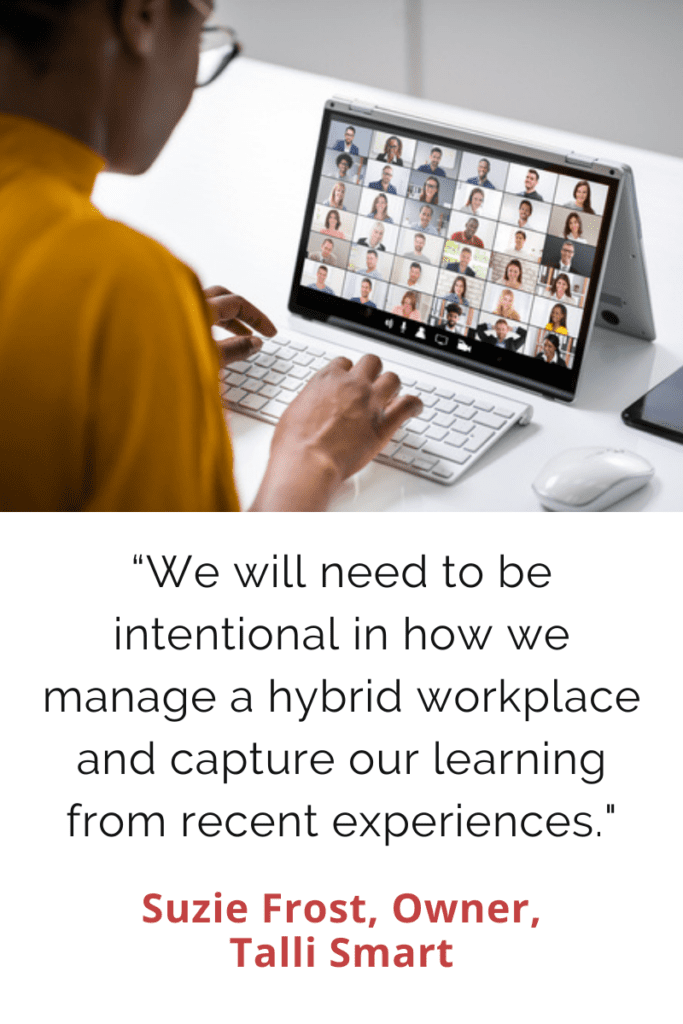Considerations for ensuring equality as hybrid work increase.
By Simon Kent
HR executives are fully aware of the potential benefits of the emerging hybrid work model for employees, but are they aware of the potential inequalities this model could bring? It seems achieving a mix of working locations can deliver greater -or at least comparable -productivity and sometimes an even better work-life balance. But that’s just it: Sometimes it works, and other times it doesn’t.
Martyn Sakol, managing partner at talent management and organisational development business OE Cam, is not alone in ringing alarm bells to make sure companies do not “sleepwalk” into problematic hybrid arrangements. Setting aside the inequality inherent to employees’ varying home-working environments, organisations must consider the implications for workers and the opportunities they can access.
“If I want to work home three days and be in the office for two, whereas my colleague spends five days a week in the office, they will have more access to the boss, potentially to the best projects and to promotion,” he notes.
Not only that, Sakol also cites everyday workplace occurrences that could have an unequal impact on remote workers. For example, if an employee is in the same building as someone else on a zoom call, what stops them from having a “watercooler moment” prior to or after that meeting? Or if a manager gives negative feedback to a worker, couldn’t that have a more severe impact if the worker is alone in their house compared to being at the office where they can discuss what happened with a colleague?
Sakol’s warning against “sleepwalking” into such situations is echoed by Taufik Arief, founder and director of People Search International. Arief believes HR leaders must take the initiative. “HR must determine the hybrid working system selected, whether at-will, shifting, split-week, or other models,” he says. “The selected model must also be determined whether it is for all employees or for specific roles or levels. If the split-week model for each employee is selected, then basically every employee has fair treatment in time distribution, but if the at-will system is selected, then the performance measurement parameters need to be more robust with less bias.”
“Fair treatment must permeate the organisation,” says Arief. “Employees must be equally visible, have equal access to company resource, including the company’s leadership, the work systems, company knowledge and so on.”
Suzie Frost, owner of HR consultancy Talli Smart, also advocates a proactive stance to ensure against inequality. “We will need to be intentional in how we manage a hybrid workplace and capture our learning from these recent experiences,” she says. “Management training will be at the heart of any strategy, helping managers understand how best to facilitate teamwide productive environments, hybrid communication approaches, and agile working so that everyone has fair and equal experiences and opportunity within the business.”
From a recognition and reward point of view, Frost notes many companies are already delivering flexible benefits. The more diverse these benefits are, the better they will suit an employee’s unique priorities. “Looking again at how to increase the diversity of benefits for hybrid working is an absolute must,” she says. “Finding creative benefits for hybrid working like offering home-based benefits such as online fitness options, home-based family support, remote EAPs, telehealth and local benefits can be balanced with a greater investment in intentional together experiences that fuse relationships for strong hybrid working performance.”
Compensation is another consideration. “Employers will now have to think about how to make compensation fair for all workers,” says Ragu Bhargava, CEO of business expansion consultants Global Upside. “Rewards programmes must always consider the impact on each employee. Those programmes that do not result in direct pay to the employee have to be tweaked for the hybrid model.”
Bhargava also notes the need to structure organisations so that all employees have access to and means of regular interaction with their managers and peers. “Hangouts can be one way,” he says. “Periodic in-person meetings are another way, albeit expensive. Companies will need to focus on involvement of remote employees so that the best talent doesn’t quit, but is recognised and provided commensurate opportunities to move up or in other lateral directions.”
Even with the changes and shifts in where and when people work, Arief still believes the biggest component of compensation will refer to the competence and market value of talent. “As a result of hybrid work, some of the benefit components will change and have a budget impact on the company,” he says. “Benefits related to commuting, meals, and travel will decrease whilst simultaneously increasing telecommunication benefits for employees.”
However reward and recognition is redesigned, it will be inextricably linked to the hybrid working model chosen by the company. As Arief states, the company will need to consider if there is a need for special benefits for employees who come to the office if the ‘at-will’ model is adopted by the company. Alternatively, if the shifting model is taken, should childcare funding be considered? “Certainly, we will see the benefits system develop in the future,” Arief concludes.















